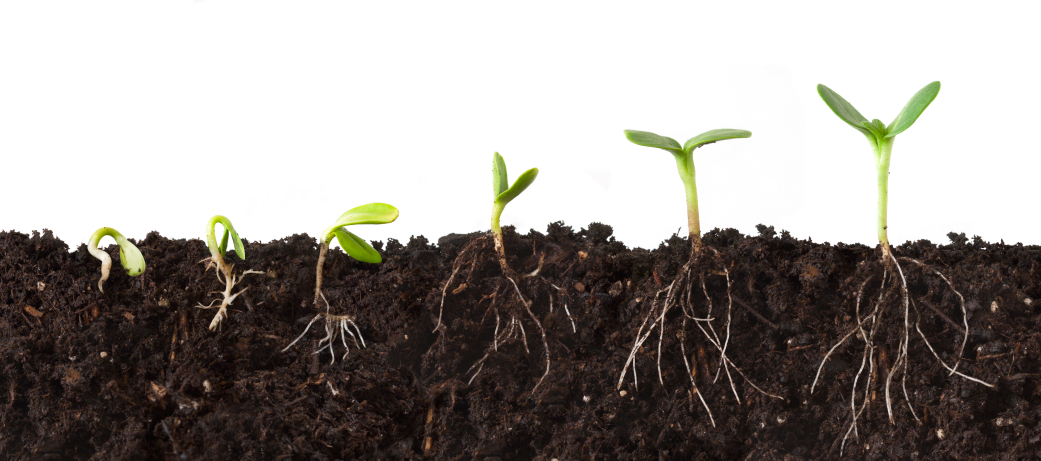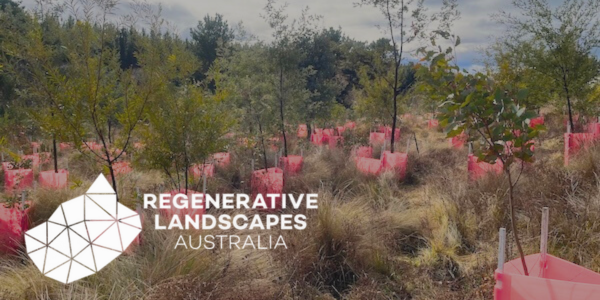TOP SOIL: A CATALYST FOR BETTER HEALTH
AND NUTRITION
First Published byTOBIAS ROBERTS AUGUST 23, 2017
WHERE WE STAND WITHOUT SOIL
Everything begins and ends with the soil. Unfortunately, close to 70% of it has been lost since the dawn of the agricultural revolution. Since the onset of the Green Revolution only half a decade ago, we´re getting rid of it faster than ever. Besides the ecocide that the loss of topsoil entails, it also is a major threat to our health. Most foods grown by industrial agricultural methods on depleted soil are nothing more than empty food carcasses filled with chemically supplied nitrogen, potassium, and phosphorus.
Without healthy soil that includes dozens of other micronutrients as a result of the functioning soil food web, we´re simply not getting the nutrition we need, no matter how cosmetic our food supposedly looks.
THE LOSS OF OUR PLANET´S FERTILITY
It can be easy to be tricked into believing that we live in a world of abundance. Seeing the sheer magnitude of the corn harvest in Iowa, to name just one example, can make us feel like our food security is well provided for by combines, GPS-controlled tractors, and the thousands of other technologies of industrial agriculture. But below that seemingly abundant harvest, a serious problem is emerging. The Great Plains of the United States have been considered one of the most fertile areas of our earth. In some places, top soil reaches over 15 feet into the earth. But that apparently endless fertility has all but disappeared in recent years.
In 2014 alone, Iowa lost over 15 million tons of topsoil, mostly due to unsustainable industrial agricultural practices. That soil, along with the millions of pounds of chemical fertilizers and pesticides eventually make their way down the Mississippi River into the Gulf of Mexico. The excess nitrates and pollution from this runoff has led to a hypoxic zone in the Gulf of Mexico which is basically a dead area where no marine life can survive.
ECOLOGICAL DANGERS OF TOP SOIL LOSS
When the soil is gone, we as a species will be completely dependent on petroleum for creating chemical fertilizers give the plants we eat the nutrients they need to grow. The problem, of course, is that oil isn’t going to be around forever either. Peak oil is a moment in time when the maximum extraction of oil is reached, and some studies believe that we´re already reached that bleak milestone.
Our dependence on petroleum based agricultural inputs for fertility purposes, then, is simply unsustainable. Furthermore, without top soil to provide naturally occurring fertility, the use of chemical inputs is creating a host of ecological damages. Chemical fertilizers are almost all salt based leading to increased soil salinity. Though plants will grow with increased vigor initially, chemical fertilizers disrupt the natural soil cycle leading to eventual barrenness.
Top soil loss doesn’t only cause a serious challenge to our long term food security, but it also causes other serious ecological catastrophes. The run off of top soil increases pollution and sedimentation in our waterways causing serious population declines in certain species of fish. Also, lands without top soil are more prone to serious flooding and increased desertification. Already 10-20% of our planet´s drylands face desertification, and needless today, plants don´t grow well in deserts.
WHAT WE CONSUME FROM PLANTS GROWN WITHOUT TOP SOIL
Foodstuffs grown by our industrial food system on seriously degraded soils depend almost exclusively on chemical fertilizer to provide plant nutrition. Chemical fertilizers are a combination of nitrogen, phosphorous and potassium; three important plant nutrients, but definitely not the only nutrients that plant needs.
Healthy soils naturally provide a host of minerals and micronutrients including calcium, zinc, boron, magnesium, sulfur, iron, copper, and dozens of others. Each of these minerals and micronutrients helps a plant grow vigorously and add to the overall nutrition of that plant. Industrial agriculture that depends solely on chemical fertilizers rich in nitrogen, phosphorous and potassium but deficient in other minerals and micronutrients produces nutritionally deficient foods. A tomato grown by an industrial farmer in a hydroponic system where the tomato only receives basic macronutrients pumped into a lifeless and sterile growing medium is basically an empty carcass. The taste of a garden tomato grown in rich top soil is much richer because of the host of nutrients that the healthy soil provided.
When we shop for vegetables at our local grocery store, then, we may very find large, blemish-free produce that looks healthy and nutritious. Inside that fancy exterior, however, is a serious deficiency in vitamins and minerals. To name just one example, broccoli grown in 1950 (in healthier top soil) averaged 12.9 milligrams of calcium content whereas it only had 4.4 mg of calcium in 2003. We may encourage our children to eat their fruits and vegetables thinking that may be healthier for them in the long run. However, how those fruits and vegetables are grown and the quality of the soil beneath them will play a major part in the nutrition they provide.
STRATEGIES TO BUILD TOP SOIL FOR IMPROVED HEALTH AND NUTRITION
So how can we help soil recover its natural, biological state so that we can produce healthy and nutritious foodstuffs? Instead of relying on chemical fertilizers, there are a number of techniques we can implement to help build healthy top soil for the soil food web to prosper.
Even if you only have a small garden, a backyard compost pile is perhaps the easiest way to create healthy, living topsoil that can be added to your garden beds. By simply layering straw, hay or other dead, carbon-rich materials with other nitrogen rich materials like animal manures, grass clipping, and kitchen scraps, the millions of microorganisms will go to work decomposing the compost pile into a rich top soil. You can learn more about how to make your own compost pile at home here.
If you have a larger growing space, it might not be feasible to make enough compost to cover all of the soil where you are planning on growing crops. Aerated compost tea is another technique that allows you to spread the benefits of bacterial and nutrient-rich compost over larger areas. To make your own compost tea, simply place a sack of recently finished compost into a large barrel of water and let it sit for several days.
Alternatively, you can also use a fish tank oxygenizer to aerate the compost for 24 hours thus increasing the amount of helpful aerobic bacteria. You can then use a backpack sprayer or a simple watering can to water plants. The compost tea will provide needed nutrients and minerals to the soil food web helping it to recover its natural resiliency.
For farmers growing food over several acres, cover cropping is a great way to add fertility to large areas of land while also reducing the need for tillage. This allows for the soil food web to recover its natural cycles of fertility while also adding nutrients and organic material.
Cover cropping is simply the practice of growing certain nutrient rich crops to help increase soil fertility. Legumes like beans, peas, and vetch can fix nitrogen from the air in the root nodules thus improving soil health. Other cover crops such as buckwheat add abundant organic material that breaks down over time adding more “food” for soil organisms to break down into top soil. Cover crops work best if they are cut down and allowed to decompose on their own.
BETTER SOIL FOR BETTER OVERALL HEALTH
A healthier and more nutritious diet begins with taking care of the soil that grows the food we eat. No amount of chemical fertilizers can ever create the same nutrition in plants that comes with healthy, live top soil. Through understanding the importance of the soil food web and through actively engaging in practices that help to maintain and improve soil quality, we can ensure that the healthy top soil we create will be keeping us eating healthy, nutritious foods.
See our post on Whats Missing in Organics


